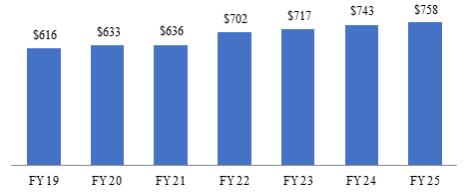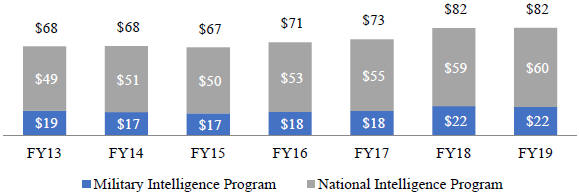The information in this prospectus is not complete and may be changed. We may not sell
these securities until the registration statement filed with the Securities and Exchange Commission is effective. This prospectus is not an offer to sell these securities and it is not soliciting an offer to buy these securities in any jurisdiction
where the offer or sale is not permitted.
SUBJECT TO COMPLETION, DATED JULY 24, 2020
PRELIMINARY PROSPECTUS
NavSight Holdings, Inc.
$200,000,000
20,000,000 Units
NavSight
Holdings, Inc. is a newly incorporated Delaware blank check company whose business purpose is to effect a merger, capital stock exchange, asset acquisition, stock purchase, reorganization or similar business combination with one or more businesses
or entities, which we refer to as our initial business combination. We have not selected any business combination target and we have not, nor has anyone on our behalf, initiated any substantive discussions, directly or indirectly, with any business
combination target. Although we may pursue targets in any industry, we intend to initially focus our search on identifying a prospective target business that provides expertise and technology to U.S. government customers in support of their national
security, intelligence and defense missions. We also intend to initially focus on prospective target businesses that have unseen potential for revenue growth and/or operating margin expansion with high recurring revenue and cash flow, defensible
intellectual property and strong market positions within their industries.
This is an initial public offering of our securities. Each unit
has an offering price of $10.00 and consists of one share of our Class A common stock and one-half of one redeemable warrant. Each whole warrant entitles the holder thereof to purchase one share of our
Class A common stock at a price of $11.50 per share, subject to adjustment, terms and limitations as described herein. The warrants will become exercisable on the later of 30 days after the completion of our initial business combination and 12
months from the closing of this offering, subject to the further conditions described elsewhere in this prospectus, and will expire five years after the completion of our initial business combination or earlier upon redemption or liquidation, as
described in this prospectus. The underwriter has a 45-day option from the date of this prospectus to purchase up to 3,000,000 additional units to cover over-allotments, if any.
We will provide our public stockholders with the opportunity to redeem all or a portion of their shares of our Class A common stock upon
the completion of our initial business combination, subject to the limitations described herein. If we have not completed an initial business combination within 24 months from the closing of this offering, we will redeem 100% of the public
shares for cash, subject to applicable law and certain conditions as described herein.
Our sponsor, Six4 Holdings, LLC, has agreed to
collectively purchase 6,000,000 warrants (or 6,600,000 warrants if the underwriter’s over-allotment option is exercised in full), each exercisable to purchase one share of our Class A common stock at $11.50 per share, at a price of $1.00
per warrant, in a private placement to occur concurrently with the closing of this offering. We refer to these warrants throughout this prospectus as the private placement warrants. Our sponsor collectively owns 5,750,000 shares of our Class B
common stock (up to 750,000 shares of which are subject to forfeiture depending on the extent to which the underwriter’s over-allotment option is exercised) which will automatically convert into shares of our Class A common stock on the
first business day following the completion of our initial business combination as described herein. Prior to our initial business combination, the holder of our Class B common stock will be entitled to vote on the appointment of directors.
Currently, there is no public market for our units, shares of our Class A common stock or warrants. We have applied to list
our units on the New York Stock Exchange (“NYSE”), under the symbol “NSH.U” on or promptly after the date of this prospectus. We cannot guarantee that our securities will be approved for listing on the NYSE. We expect the
shares of our Class A common stock and warrants comprising the units will begin separate trading on the NYSE under the symbols “NSH” and “NSH WS,” respectively, on the 52nd day following the date of this prospectus (or,
if such date is not a business day, the following business day) unless Credit Suisse Securities (USA) LLC (“Credit Suisse”) informs us of its decision to allow earlier separate trading, subject to our filing a Current Report on Form 8-K with the Securities and Exchange Commission (the “SEC”), containing an audited balance sheet reflecting our receipt of the gross proceeds of this offering and issuing a press release announcing when
such separate trading will begin.
We are an “emerging growth company” and a “smaller reporting company” under
applicable federal securities laws and will be subject to reduced public company reporting requirements. Investing in our securities involves a high degree of risk. See “Risk Factors” beginning on page 38 for a
discussion of information that should be considered in connection with an investment in our securities. Investors will not be entitled to protections normally afforded to investors in Rule 419 blank check offerings.
Neither the SEC nor any state securities commission has approved or disapproved of these securities or determined if this prospectus is
truthful or complete. Any representation to the contrary is a criminal offense.
|
|
|
|
|
|
|
|
|
| |
|
Per
Unit |
|
|
Total |
|
| Public offering price |
|
$ |
10.00 |
|
|
$ |
200,000,000 |
|
| Underwriting discounts and commissions(1) |
|
$ |
0.55 |
|
|
$ |
11,000,000 |
|
| Proceeds, before expenses, to us |
|
$ |
9.45 |
|
|
$ |
189,000,000 |
|
| (1) |
Includes $0.35 per unit, or $7,000,000 in the aggregate (or $8,050,000 in the aggregate if the
underwriter’s over-allotment option is exercised in full), in the aggregate payable to the underwriter for deferred underwriting commissions to be placed in a trust account located in the United States as described herein and released to the
underwriter only upon the completion of an initial business combination. See also “Underwriting” for a description of compensation and other items of value payable to the underwriter. |
Of the proceeds we receive from this offering and the sale of the private placement warrants described in this prospectus, $200,000,000, or
$230,000,000 if the underwriter’s over-allotment option is exercised in full ($10.00 per unit in either case), will be deposited into a segregated trust account located in the United States at Bank of America Corporation, with American Stock
Transfer & Trust Company, LLC, acting as trustee, and $2,000,000 will be available to pay fees and expenses in connection with the closing of this offering and for working capital following the closing of this offering. Except with respect
to interest earned on the funds held in the trust account that may be released to us to pay our taxes, if any, the funds held in the trust account will not be released until the earliest to occur of: (a) the completion of our initial business
combination; (b) the redemption of any public shares properly tendered in connection with a stockholder vote to amend our certificate of incorporation (i) to modify the substance or timing of our obligation to allow redemption in
connection with our initial business combination or to redeem 100% of our public shares if we do not complete our initial business combination within 24 months from the closing of this offering or (ii) with respect to any other provisions
relating to stockholders’ rights or pre-initial business combination activity; and (c) the redemption of all of our public shares if we have not completed our business combination within
24 months from the closing of this offering, subject to applicable law. The proceeds deposited in the trust account could become subject to the claims of our creditors, if any, which could have priority over the claims of our public
stockholders.
The underwriter is offering the units for sale on a firm commitment basis. The underwriter expects to deliver
the units to the purchasers on or about , 2020.
Credit Suisse
The date
of this prospectus is , 2020.





